Industry and trade
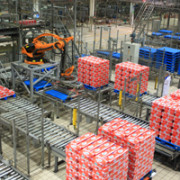 Environment
Environment
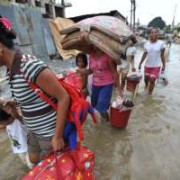 Energy
Energy
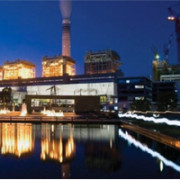 Urban development
Urban development
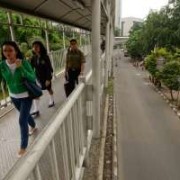 Regional cooperation and integration
Regional cooperation and integration
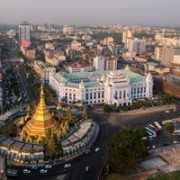 Finance sector development
Finance sector development
 Economics
Economics
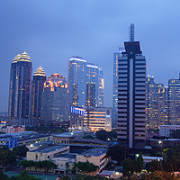 Finance sector development
Finance sector development
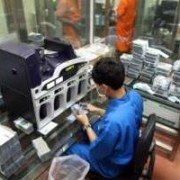 Economics
Economics
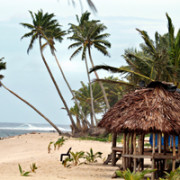 Social development and protection
Social development and protection
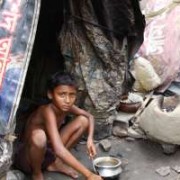
From global factory to global mall: East Asia’s changing export composition

Over the past decades, East Asia has been the most successful region in the world in building up cross-border supply chains and has subsequently become described as “Factory Asia” (Baldwin 2008). In a form of “triangle trade”, advanced countries in East Asia exported sophisticated parts and components to less developed countries in the region, where these are assembled into final consumption goods and then shipped to rich-nation markets, especially the US and EU (Baldwin and Kawai 2013).
Window of opportunity still open on climate action

A set of reports by the Intergovernmental Panel on Climate Change (IPCC), the last of which was released on November 2, 2014, sets the scene for governments to renew their efforts on the issue through ambitious commitments for a comprehensive climate agreement in Paris in December 2015.
Securing energy for low-carbon Asia: What needs fixing?

The pattern of energy supply and demand that has prevailed over the last 3 decades is undergoing transformation, with great consequences for Asia’s energy security and regional cooperation. The two factors driving this transformation are the rise of the Association of Southeast Asian Nations (ASEAN), the People’s Republic of China (PRC), and India as major energy consumers, and the impressive additions to oil, gas, and coal output. The first is driven by growing populations, industrial growth, and economic ascendance of emerging economies. The second stems from the opening up of new geological formations for the production of conventional fuels at reasonable costs.
Walkability—Building cities for people too

With the urban population swelling the world over, it makes sense that we start—or go back to—designing cities for people too. People are a city’s principal raison d'etre. Cities therefore should be designed or redesigned to address one aspect that is at a more personal level for residents to make it greener: walkability.
Myanmar in transition: economic development and shifts in foreign aid from East Asia

One of the pillars of Myanmar’s democratic transition is its capacity to foster economic development through foreign investments. However, a huge infrastructure deficit combined with electricity shortages are serious concerns for foreign companies willing to operate in this promising new market. As Asia’s second poorest country, Myanmar’s leaders need a reliable foreign investor who has both the financial capabilities and the industrial skills to cope with the challenge. This partner is Japan.
Renminbi stepping in right direction toward internationalization

Over the past several decades, we have seen how the People’s Republic of China’s (PRC) high economic growth and increasing economic integration with other countries have led to a dramatic increase in the PRC’s clout in global output and trade. Just look at the facts. The PRC is the world's second largest economy, accounting for 12% of global gross domestic product in 2013. It is also the world's largest exporter and second largest importer, accounting for about 12% of world trade in 2013. Attracting more than $110 billion in foreign direct investment (FDI) in 2013, the PRC is the world's largest developing country recipient of FDI inflows. It is also the world's largest holder of FX reserves, with a total of $3.8 trillion in reserves at the end of 2013.
Can president-elect Joko Widodo transform Indonesia’s economy?

Indonesia's president-elect Joko Widodo (Jokowi) has declared he aims to push the growth rate of the economy above 7% a year. The growth rate has been running below 6% a year, and the World Bank and IMF predict that it will continue at 5.6% and 5.8%, respectively, in 2015.
Banking integration in ASEAN gathers pace

The ASEAN Economic Community, planned to come into effect in 2015, is expected to liberalize goods, capital and skilled labor flows in the ASEAN region. While there has been considerable progress in the area of trade integration, financial integration still lags behind. The ASEAN Banking Integration Framework, which aims to liberalize the banking market by 2020, could help pave the way for further integration and the entry of ASEAN banks into regional banking markets.
Improved flight connectivity could spur tourism and economic growth in the Pacific region

Tourism is one of the most promising growth sectors in the Pacific region. The number of tourist arrivals has more than doubled in the past decade, from around 600,000 in 2002 to 1.3 million ten years later. The potential for tourism in the Pacific is substantial as many islands offer unspoiled nature and scenic landscapes. However, travel to the Pacific can be inconvenient. There are only 35 direct flights from countries outside the Pacific to countries in the Pacific and the flight frequency is low. New research by ADBI shows that the number and frequency of direct flights is an important determinant on the number of tourist arrivals in the Pacific. The research also highlights that the potential of receiving large numbers of Asian tourists remains untapped. However, realizing the great potential of tourism will not only depend on better connectivity, but also on the capacity of Pacific region countries to respond to the growing demand.
Asia and Pacific region post-2015 priorities, MDG8, and Global Partnerships

Any contemporary story on development in the Asia and Pacific region begins with reflection on the massive gains achieved in the fight against poverty. The incidence of people living on less than $1.25 a day fell from 54.5% in 1990 to 20.7% in 2010, with the number of extreme poor declining from 1.48 billion to 733 million. This precipitous decline in poverty incidence has been accompanied by tremendous gains in access to health and education.


Search
Subscribe / Connect to Asia Pathways
Subjects
- Agriculture and natural resources
- Blog
- Capacity development
- Climate change
- Economics
- Education
- Energy
- Environment
- Finance sector development
- Gender
- Governance and public sector management
- Health
- Industry and trade
- Information and Communications Technology
- Infrastructure
- Miscellaneous
- Population
- Poverty
- Private sector development
- Regional cooperation and integration
- Sanitation
- Social development and protection
- Transport
- Uncategorized
- Urban development
- Video Blog
- Water
Recent Posts
- Facilitating high-speed rail knowledge transfer between Japan and India
- Artificial intelligence: A new driver for inclusive growth and development?
- Increasing trust in cross-border e-commerce and artificial intelligence
- Enhancing access to maternal and newborn healthcare in developing Asia
- Can electric vehicles lead the way to a sustainable future?




Recent Comments